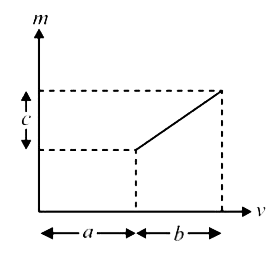How can the spherical aberration produced by a lens be minimised ?
Step-by-Step Solution:
1. Understanding Spherical Aberration:
- Spherical aberration occurs when light rays that strike a lens near its edge focus at different points than those that strike near the center. This results in a blurred image.
2. Using Stops to Minimize Aberration:
- One effective method to minimize spherical aberration is by using an aperture stop. This stop reduces the effective aperture of the lens, which helps in controlling the rays of light that enter the lens.
3. Types of Rays:
- The stop can be designed to allow either axial rays (which pass through the center of the lens) or marginal rays (which pass through the edges of the lens). By selectively allowing one type of ray, we can reduce the spherical aberration.
4. Impact on Image Brightness:
- While using a stop minimizes spherical aberration, it also reduces the amount of light that can pass through the lens. This means that the resulting image may appear less bright due to the reduced light intensity.
5. Conclusion:
- In summary, spherical aberration can be minimized by using an aperture stop to limit the effective aperture of the lens, allowing only certain rays of light to pass through. However, this comes at the cost of reduced image brightness.
- Spherical aberration occurs when light rays that strike a lens near its edge focus at different points than those that strike near the center. This results in a blurred image.
- One effective method to minimize spherical aberration is by using an aperture stop. This stop reduces the effective aperture of the lens, which helps in controlling the rays of light that enter the lens.
- The stop can be designed to allow either axial rays (which pass through the center of the lens) or marginal rays (which pass through the edges of the lens). By selectively allowing one type of ray, we can reduce the spherical aberration.
- While using a stop minimizes spherical aberration, it also reduces the amount of light that can pass through the lens. This means that the resulting image may appear less bright due to the reduced light intensity.
- In summary, spherical aberration can be minimized by using an aperture stop to limit the effective aperture of the lens, allowing only certain rays of light to pass through. However, this comes at the cost of reduced image brightness.
Similar Questions
What is meant by :
(1) Spherical aberration ?
(2) Chromatic aberration ?
(ü) How can spherical aberration be reduced/ minimized ? Suggest any one method.
View SolutionSpherical aberration in a thin lens can be reduced by
View SolutionHow can the pitch of sound produced in a piano be changed ?
View SolutionA convex lens is placed some where between an object and a screen which are separated by 48 cm. If the numerical value of magnification produced by the lens is 3, what is the focal length of lens?
View SolutionWhat is the cause of spherical aberration in lenses? State a method to minimise the defect.
View SolutionThe graph shows how the magnification m produced by a thin lens varies with image distance v. What is the focal length of the lens used?

View SolutionThe graph shows how the magnification m produced by a thin lens varies with image distance v. What is the focal length of the lens used?

View SolutionA convergent doublet of separated lens correct for spherical aberration, are separated by 2m and has an equivalent focal lenth of 10cm. Calculate the focal length of its component lenses.
View SolutionThe distance between an object and a divergent lens is m times the focal length of the lens. The linear magnification produced by the lens is
View SolutionA convergent lens of power 16D is used as a simple microscope. The magnification produced by the lens, when the final image is formed at least distance of distinct vision is
View Solution
